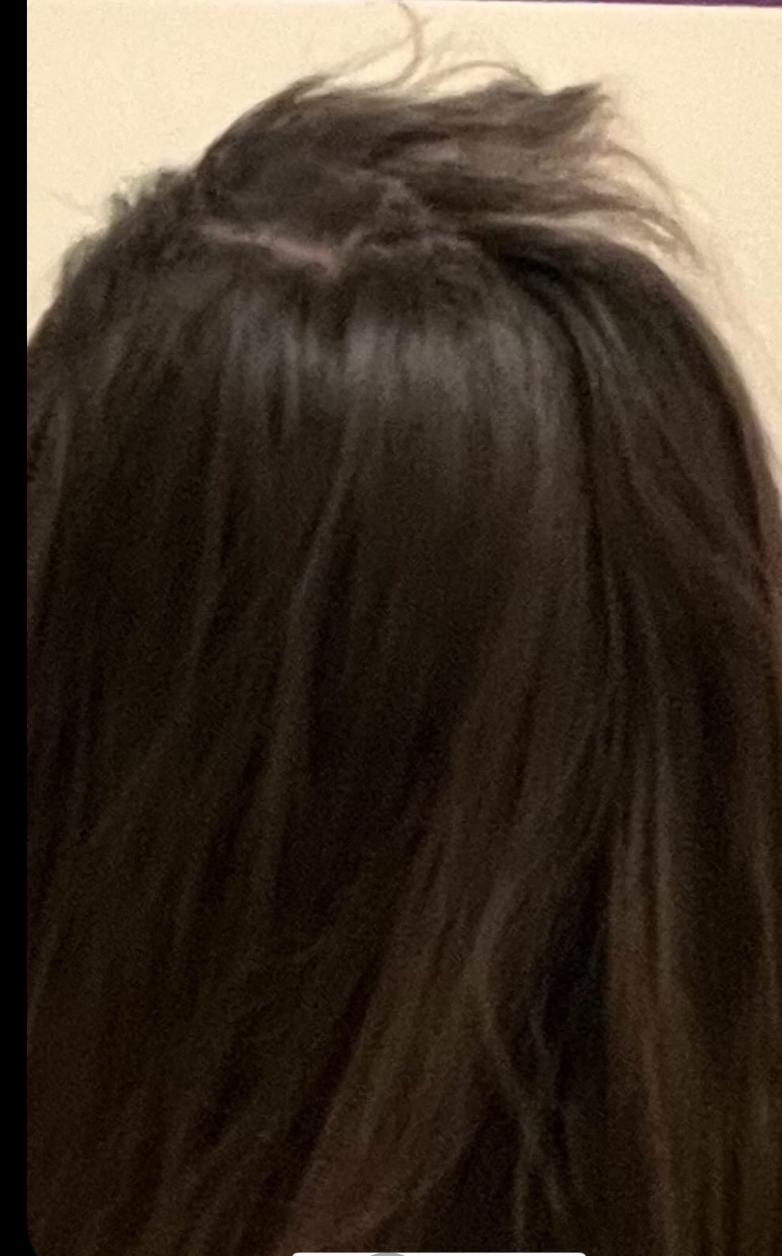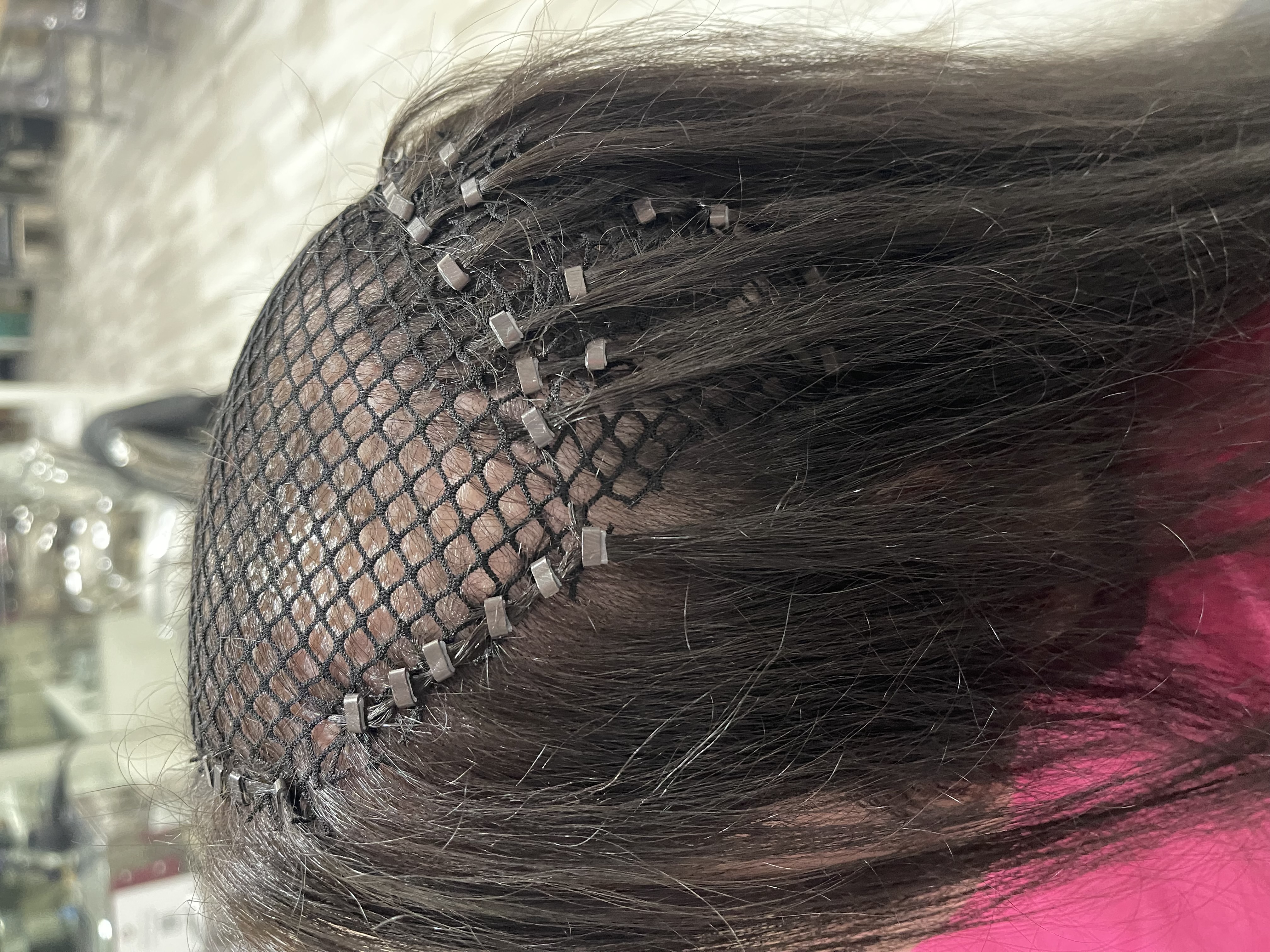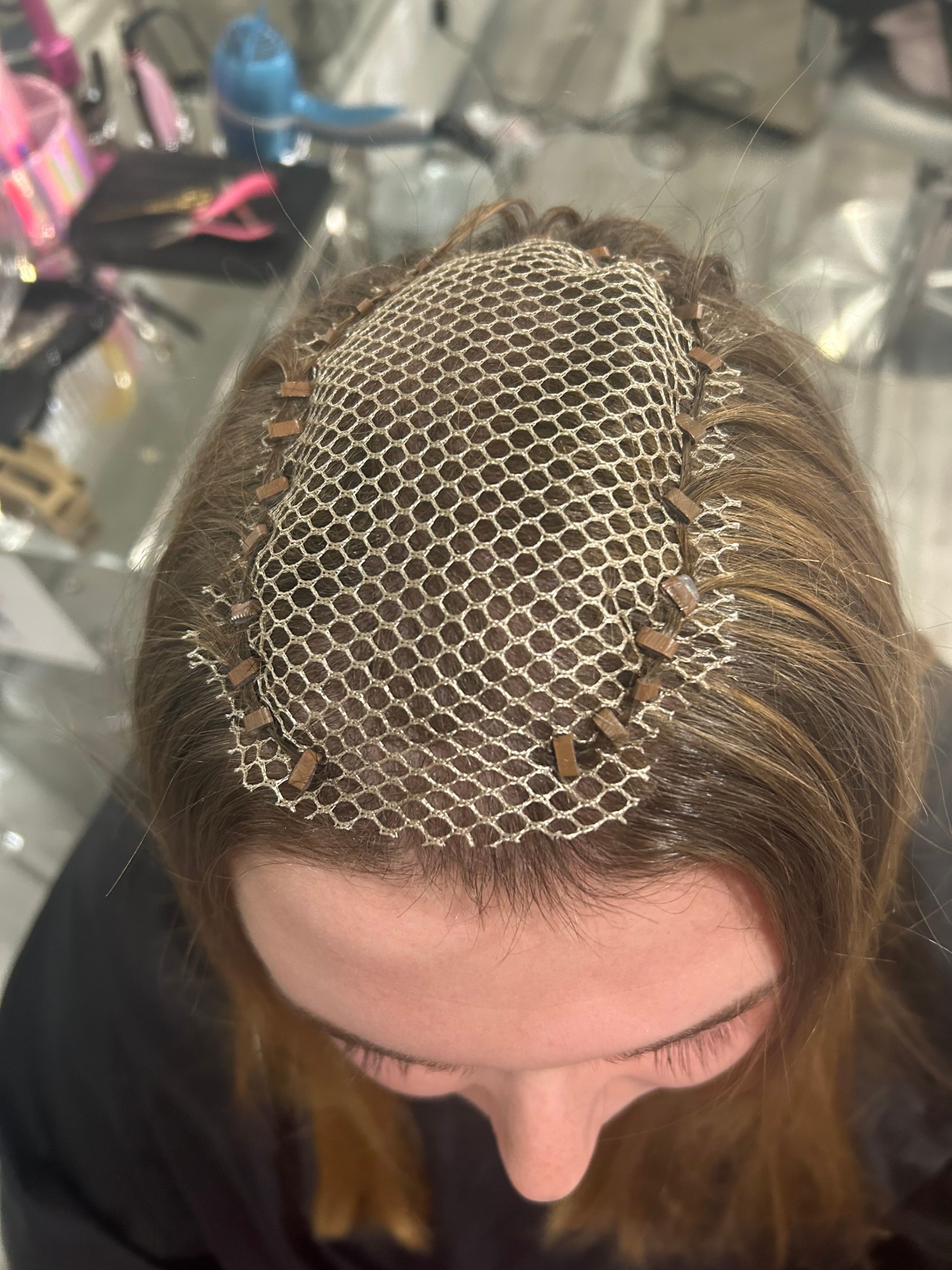Effective Trichotillomania Hair Regrowth Tips


Trichotillomania, a compulsive disorder characterized by the repetitive pulling of hair, can have a significant impact on one's mental health and well-being. Individuals with trichotillomania may experience a sense of control through their hair-pulling behavior, but it often leads to hair loss, bald spots, and distress. Fortunately, there are essential strategies and treatments available to help manage trichotillomania and promote hair regrowth.
In this blog, we will explore the underlying psychology of trichotillomania, recognize the symptoms, understand the causes, and discuss effective ways to overcome the disorder and encourage hair regrowth. By understanding the psychological roots of hair pulling, the impact of trichotillomania on the hair growth cycle, and implementing initial steps for hair regrowth, individuals can regain a sense of control and promote healthy hair growth. We will also discuss advanced hair regrowth techniques, lifestyle adjustments, and the role of community and support in overcoming trichotillomania.
Understanding Trichotillomania and Its Effects on Hair
Trichotillomania is an impulse control disorder that falls under the umbrella of mental health conditions. Individuals with trichotillomania have an uncontrollable urge to pull out their own hair, resulting in hair loss and bald patches. This compulsive hair-pulling provides a sense of control or relief from negative emotions, such as anxiety, stress, or sadness. However, the hair-pulling behavior can be distressing and impact the individual's quality of life and self-esteem.
Trichotillomania is more than just a habit. It is a complex psychological disorder with underlying emotional triggers. Hair pulling serves as a means of coping for individuals, often providing them with a temporary sense of control or relief. The act of pulling hair stimulates the release of serotonin, a neurotransmitter associated with feelings of well-being. However, the relief is temporary, and the cycle of hair-pulling continues.
The Psychological Roots of Hair Pulling
The psychological roots of hair pulling in trichotillomania lie in the complex interplay of mental health and emotional factors. Individuals with trichotillomania often engage in hair pulling as a compulsive behavior to seek relief or control over negative emotions. This behavior may be triggered by stress, anxiety, or boredom, which serve as emotional triggers for hair-pulling episodes.
Understanding and addressing these underlying emotional factors is crucial in managing trichotillomania and promoting hair regrowth. Seeking therapy, such as habit reversal training (HRT), or counseling can provide valuable support in developing healthier coping mechanisms and addressing the emotional issues that contribute to hair pulling. By identifying and managing these psychological roots, individuals with trichotillomania can work towards breaking the cycle of hair pulling and promoting a healthier relationship with their hair.
How Trichotillomania Affects the Hair Growth Cycle
Trichotillomania disrupts the natural hair growth cycle, leading to irregular regrowth patterns and further hair loss. Understanding the hair growth cycle is essential to comprehend the effects of trichotillomania and develop strategies for hair regrowth.
The hair growth cycle consists of three phases: the anagen phase (active growth phase), the catagen phase (transition phase), and the telogen phase (resting phase). In trichotillomania, hair pulling interrupts the normal hair growth cycle, resulting in uneven regrowth and the potential for bald patches. The hair shaft may also be damaged due to the pulling action.
To promote hair regrowth after trichotillomania, it is important to break the cycle of hair pulling and allow the hair growth cycle to restore to normal. This can be achieved through habit reversal training and other behavioral therapy techniques. By focusing on behavioral changes, individuals can work towards healthier hair regrowth and minimize the impact of trichotillomania on their hair.
Initial Steps for Hair Regrowth After Trichotillomania
Taking initial steps for hair regrowth after trichotillomania is crucial in promoting healthy hair growth and breaking the cycle of hair pulling. Establishing a consistent hair care routine can provide a sense of control and promote a positive mindset, and wearing false eyelashes can also be an option if eyelashes have been lost due to pulling.
Incorporating habit reversal training, which involves replacing hair-pulling behavior with alternative actions, can help individuals manage their impulses and reduce hair-pulling. This therapy, including cognitive behavioral therapy, focuses on increasing self-awareness and developing healthier coping mechanisms. By implementing these initial steps, individuals can start their journey towards regaining control over their hair and promoting healthy regrowth.
Identifying and Managing Triggers
Identifying and managing triggers is essential in effectively managing trichotillomania and preventing hair-pulling episodes. Triggers can include stress, anxiety, and other negative emotions that may lead to hair-pulling.
By understanding personal triggers, individuals can develop effective stress management techniques and coping strategies to reduce the urge to pull hair. This may include engaging in relaxation techniques such as deep breathing exercises, meditation, or yoga. Seeking therapy or counseling can also provide valuable support in developing healthier coping mechanisms and addressing the underlying emotional factors contributing to hair pulling.
Establishing a Hair Care Routine to Encourage Growth
Establishing a hair care routine is crucial in promoting healthy hair growth after trichotillomania. A consistent routine can provide a sense of control and promote healthy regrowth.
A hair care routine should include gentle scalp massages to stimulate blood flow and promote hair growth. Using essential oils such as lavender or rosemary during these massages can further support hair regrowth. Additionally, ensuring a balanced diet rich in essential vitamins and minerals, such as iron, biotin, and vitamin D, can provide the necessary nutrients for healthy hair growth.
Avoiding harsh hair treatments, minimizing the use of heat-styling tools, and opting for protective hairstyles can also help prevent further hair damage. By implementing a hair care routine focused on promoting regrowth, individuals can take proactive steps toward encouraging healthy hair growth after trichotillomania.
Advanced Hair Regrowth Techniques
For individuals looking for more advanced hair regrowth techniques, the good news is that there are innovative treatments available to promote hair growth after trichotillomania. These treatments can aid in the regeneration of hair follicles and promote healthy regrowth.
Hair restoration techniques, such as hair transplant surgery or follicular unit extraction (FUE), can be considered for individuals with more severe cases of hair loss, taking into account their medical history. These procedures involve transplanting hair follicles from other areas of the body to the affected areas.
Light therapy, also known as low-level laser therapy, is another innovative treatment option for hair regrowth. This non-invasive procedure involves using red or near-infrared light to stimulate hair follicles and promote regrowth. By exploring these advanced techniques, individuals can find additional options to support their hair regrowth journey.
Nutritional Supplements for Hair Health
Incorporating nutritional supplements into a balanced diet can further support hair health and promote regrowth after trichotillomania. These supplements provide essential vitamins and minerals that are crucial for healthy hair growth. Some beneficial supplements include:
Biotin: Promotes hair growth and strengthens hair strands.
-
Vitamin E: Enhances blood circulation to the scalp and supports hair follicle health.
-
Iron: Helps transport oxygen to the hair follicles, promoting hair growth.
-
Omega-3 fatty acids: Nourishes hair follicles and promotes a healthy scalp.
It is important to consult with a healthcare provider before starting any supplements to ensure they are suitable for individual needs. By incorporating these supplements into a balanced diet, individuals can provide their hair with the necessary nutrients for healthy regrowth.
Innovative Treatments: From Topicals to Light Therapy
In addition to nutritional supplements, there are various innovative treatments available for promoting hair regrowth after trichotillomania hair loss. These treatments utilize advanced technologies and techniques to stimulate hair follicles and promote healthy regrowth. Some innovative treatments include:
-
Topical treatments: These are applied directly to the scalp and may contain a number of medications such as minoxidil, which helps to stimulate hair growth.
-
Platelet-rich plasma (PRP) therapy: This involves injecting a concentration of platelets into the scalp to promote hair regrowth.
-
Low-level laser therapy (LLLT): This non-invasive treatment uses red or near-infrared light to stimulate hair follicles and encourage regrowth.
Consulting with a healthcare provider or hair restoration specialist can help individuals determine which innovative treatment option is best suited for their specific needs. By exploring these treatments, individuals can further enhance their hair regrowth journey after trichotillomania.
Considering Hair Transplant Surgery for Severe Cases
For individuals experiencing significant hair loss due to trichotillomania, considering a hair transplant surgery may be an effective solution. A well-structured treatment plan can be developed in collaboration with a dermatologist or hair restoration specialist to assess the severity of hair loss and determine the best course of action. Innovative treatments such as Follicular Unit Extraction (FUE) or Follicular Unit Transplantation (FUT) are typically recommended for those with extensive hair loss. These methods involve transplanting healthy hair follicles from donor areas to the affected regions, providing a natural and permanent solution to hair loss. A hair transplant, particularly using methods like FUT, can be a lifeline for individuals seeking to regain their confidence and restore their hairline, making it a viable option for severe cases of hair loss caused by trichotillomania.
Lifestyle Adjustments to Support Hair Regrowth
Making lifestyle adjustments is crucial in supporting hair regrowth after trichotillomania and improving overall quality of life. By implementing stress management techniques and adopting healthy habits, individuals can create a supportive environment for hair regrowth.
Stress management techniques such as exercise, mindfulness, and relaxation practices can help reduce the urge to pull hair and promote a healthier mindset. Engaging in activities that divert focus from hair-pulling, such as hobbies or exercises, can also contribute to a sense of control and overall well-being. By prioritizing self-care and making positive lifestyle adjustments, individuals can support their hair regrowth journey and improve their quality of life.
Exercises and Activities to Divert Focus from Hair Pulling
Engaging in exercises and activities that divert focus from hair pulling can be highly effective in managing trichotillomania and promoting hair regrowth. By redirecting attention towards positive outlets, individuals can develop a sense of control over their impulses and reduce hair pulling behaviors. Some exercises and activities that can help divert focus include:
-
Hobbies: Finding enjoyable hobbies such as painting, knitting, or playing a musical instrument can provide a sense of fulfillment and distract from the urge to pull hair.
-
Physical activities: Participating in physical activities like yoga, dancing, or sports can release endorphins and reduce stress, thus decreasing the need to engage in hair pulling.
-
Journaling: Writing down thoughts and emotions in a journal can provide an outlet for self-expression and serve as an alternative to hair pulling.
By incorporating these exercises and activities into their daily routines, individuals can divert their focus from hair pulling and promote healthier habits.
Special Considerations: Trichotillomania in People with OCD or Autism
Trichotillomania often coexists with other mental health disorders, including Obsessive-Compulsive Disorder (OCD) and autism. Individuals with OCD may experience heightened urges to pull hair, as both conditions involve compulsive behaviors. Understanding the unique challenges faced by those with trichotillomania, especially in conjunction with OCD or autism, is essential for developing effective coping strategies. Mental health support tailored to these individuals can help address the underlying psychological factors influencing hair-pulling behaviors. Engaging in therapy or support groups specifically designed for individuals with these co-occurring conditions can provide valuable resources and community support, fostering a sense of belonging and understanding in the journey toward recovery.
The Role of Community and Support in Overcoming Trichotillomania
Finding support in the community is essential in overcoming trichotillomania and promoting hair regrowth. Connecting with others who have experienced similar struggles can provide a sense of understanding, encouragement, and motivation. Sharing stories and progress can help individuals feel less alone in their journey and inspire hope. Support groups and online forums dedicated to trichotillomania are valuable resources for individuals seeking a supportive community. By being part of a community, individuals can gain insights, learn coping strategies, and find encouragement to overcome trichotillomania.
Finding Support Groups and Forums
Finding support groups and forums dedicated to trichotillomania can provide a sense of community and understanding for individuals struggling with the disorder. These groups offer a safe space to share experiences, ask questions, and learn from others who have faced similar challenges. Online forums, social media groups, and local support groups are valuable resources for connecting with individuals who can provide support and guidance. By actively participating in these communities, individuals can gain a sense of belonging and access valuable information about managing trichotillomania and promoting hair regrowth. It is important to remember that professional help should also be sought for proper diagnosis and treatment.
Sharing Stories and Progress for Motivation
Sharing personal stories and progress can be a powerful source of motivation for individuals struggling with trichotillomania. By sharing their experiences, individuals can inspire others and provide hope that hair regrowth is possible. Personal stories can also serve as a reminder of the progress made and the journey towards overcoming trichotillomania. Whether through social media platforms, support groups, or personal blogs, sharing stories is a way to create a sense of community and encourage others on their own regrowth journey. By sharing stories and progress, individuals can motivate themselves and others to continue their efforts in managing trichotillomania and promoting hair regrowth.
Monitoring Progress: What to Expect
Monitoring progress is an important aspect of managing trichotillomania and promoting hair regrowth. Setting realistic goals and tracking progress can provide individuals with a sense of accomplishment and motivation. It is important to remember that regrowth may vary from person to person and can take time. Seeking professional help from a healthcare provider or mental health specialist is crucial for proper diagnosis and treatment. Regular check-ins with a professional can help monitor progress, adjust strategies if needed, and provide additional support in managing trichotillomania and promoting hair regrowth.
Setting Realistic Goals for Hair Regrowth
Setting realistic goals is essential in managing expectations and promoting healthy hair regrowth after trichotillomania. The severity of hair loss and the individual's unique hair growth cycle should be taken into account when setting goals. It is important to remember that regrowth may vary from person to person and can take time. By setting achievable goals, individuals can track their progress and celebrate small victories along the way. Consulting with a healthcare provider or hair restoration specialist can provide guidance in setting realistic goals based on the individual's specific needs and the severity of their hair loss.
When to Seek Professional Help
Knowing when to seek professional help is crucial in managing trichotillomania and promoting hair regrowth. A healthcare provider or mental health specialist can provide a proper diagnosis and create an individualized treatment plan. If hair-pulling behaviors are causing significant distress, impacting daily life, or resulting in noticeable hair loss, it is important to seek professional help. These professionals can offer guidance, therapy, including cognitive behavioural therapy, and support in managing trichotillomania and promoting healthy hair regrowth. It is important to remember that professional help is available and seeking it can be a crucial step towards overcoming trichotillomania.
Being Patient During the Hair Regrowth Journey
Patience plays a crucial role in the hair regrowth journey following trichotillomania. As hair growth is a gradual process, individuals must embrace the understanding that changes may take time. Although it can be disheartening to wait for visible results, staying committed to a consistent hair care routine and following recommended treatments can lead to positive outcomes. The good news is that with diligence and the right approach, many individuals experience successful regrowth over time. Celebrating small milestones and maintaining a positive mindset can help navigate the ups and downs of the regrowth journey, ultimately leading to restored confidence and a healthier relationship with hair.

Conclusion
Regaining hair after trichotillomania requires a comprehensive approach encompassing triggers identification, nurturing hair care routines, and innovative treatments like light therapy. By supplementing with hair-friendly nutrients and managing stress through diverse activities, you can support the regeneration process effectively. Connecting with supportive communities adds a layer of motivation and understanding to your journey. Set achievable milestones, seek professional guidance when needed, and cultivate patience as you embark on this transformative path. For personalized insights and guidance, sign up for a free consultation to kickstart your regrowth journey. Thank you to trichotillomania regrowth tips Reddit.
Frequently Asked Questions
Can Hair Grow Back After Years of Trichotillomania?
Yes, hair can grow back after years of trichotillomania. However, regrowth may vary depending on the severity of hair loss and the individual's overall health and unique hair growth cycle. The hair follicles have the potential to restore and produce new hair when hair pulling behaviors are reduced or eliminated.
What Are the Best Vitamins for Hair Regrowth in Trichotillomania Cases?
Vitamins such as biotin, vitamin E, iron, and omega-3 fatty acids are beneficial for promoting hair regrowth in trichotillomania cases. These vitamins support healthy hair growth and strengthen the hair shaft. However, it is important to consult with a healthcare provider before starting any supplements to ensure they are suitable for individual needs and to check for any deficiencies that may affect hair health.





